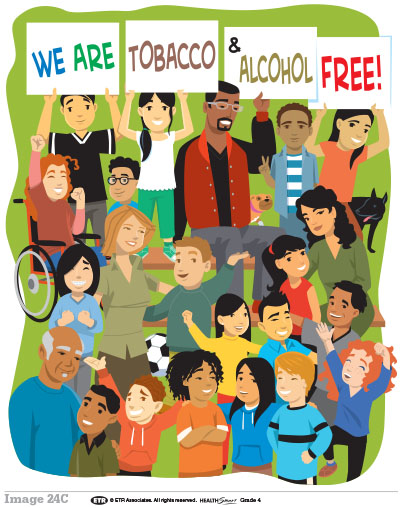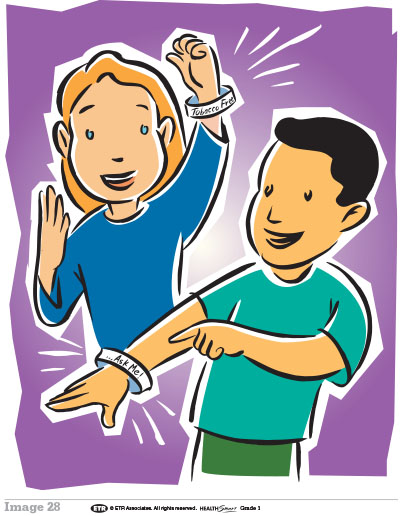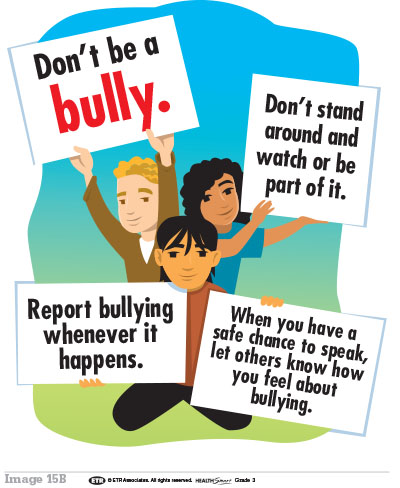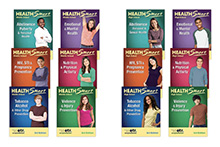Building Health Skills: Advocacy
By Suzanne Schrag
HealthSmart Series Editor
Here’s a different take on a familiar saying: Those who can, do. Those who really can, teach! And those who teach health know the value of teaching advocacy skills.
 Giving students practice in advocacy is a great way to build engagement, review key concepts and personalize what they’ve been learning about healthy behaviors. Advocacy also helps communities hear vital information about health-related issues from critical stakeholders—young people themselves!
Giving students practice in advocacy is a great way to build engagement, review key concepts and personalize what they’ve been learning about healthy behaviors. Advocacy also helps communities hear vital information about health-related issues from critical stakeholders—young people themselves!
We know that a focus on skills-based health education is the best way to help young people establish healthy behaviors and reduce their health risks. The National Health Education Standards (NHES) outline performance indicators for seven critical health skills. The skill of advocacy offers great opportunities for students to integrate and apply what they’ve been learning so they can help others.
Teaching Advocacy Across the Grades
The Standards offer guidance through the performance indicators outlined for the skills at each grade span. As students grow in knowledge, capacity and independence, what it means to practice a particular health skill also evolves. So what does advocacy look like in kindergarten? at grade 3? in middle school or high school? Let’s see what the Standards suggest.
 In Grades pre-K though 2, there are two NHES performance indicators for the skill of advocacy: (1) make requests to promote personal health, and (2) encourage peers to make positive health choices. At this youngest level, perhaps the most important people for whom children can advocate are themselves! Knowing how to ask others to support them in practicing healthy behaviors is a critical first step. Once they can do that, they can extend their efforts to help their peers behave in ways that support health too.
In Grades pre-K though 2, there are two NHES performance indicators for the skill of advocacy: (1) make requests to promote personal health, and (2) encourage peers to make positive health choices. At this youngest level, perhaps the most important people for whom children can advocate are themselves! Knowing how to ask others to support them in practicing healthy behaviors is a critical first step. Once they can do that, they can extend their efforts to help their peers behave in ways that support health too.
At Grades 3, 4 and 5, students also learn to encourage others to make positive health choices, but they are now expected to be able to support their advocacy efforts by stating valid opinions supported by accurate information about various health issues.
In middle school, the Standards expand the performance indicators for the skill of advocacy further still, by adding a cooperative component and the ability to tailor a message for a particular audience. Students in Grades 6–8 are expected to:
- State a health-enhancing position on a topic and support it with accurate information.
- Demonstrate how to influence and support others to make positive health choices.
- Work cooperatively to advocate for healthy individuals, families, and schools.
- Identify ways in which health messages and communication techniques can be altered for different audiences.
The advocacy performance indicators for high school (Grades 9–12) are similar, with the added idea of using peer and societal norms to reinforce and support the health-enhancing message.
Some HealthSmart Examples
Here’s how ETR’s HealthSmartprogram teaches and provides practice in the skill of advocacy. The questions that guide the practice of the skill increase in sophistication as students move through the grades.
For example, in the Grade 1 Safety and Injury Prevention lessons, students learn these simple steps to help others make safety smart choices:
- Tell the facts.
- Say why you want to be safe or why it’s important to be safe.
- Encourage others to make safe choices too.
 At the upper elementary grades, students learn how to “take a stand” on a variety of important health issues. A similar set of steps helps them understand what taking a stand means:
At the upper elementary grades, students learn how to “take a stand” on a variety of important health issues. A similar set of steps helps them understand what taking a stand means:
- State the facts.
- Express your view or opinion.
- Encourage others to make healthy and safe choices.
The idea of taking a stand can be used across many different health content areas. For example, in Grade 3, students follow these steps to help their friends avoid germs and stay healthy. In Grade 4 they encourage peers to be tobacco and alcohol free. In Grade 5 they take a stand against bullying, cyberbullying and fighting.
At the middle and high school levels, a range of advocacy techniques and projects are introduced. Students frequently work with partners or in small groups to design and present their advocacy messages. The steps for the process add more sophistication and often include tailoring the message to reach a particular group of peers.
 For example, a middle school Injury Prevention lesson on safety gear teaches students the following steps in the advocacy process:
For example, a middle school Injury Prevention lesson on safety gear teaches students the following steps in the advocacy process:
- Decide which people you want to reach. This group is often called your “target audience.”
- Find out the facts. Then use these facts to make your case. Clearly say what the issue or problem is and why it’s important.
- Suggest things people can do. Offer steps to take that can really make a difference.
- Inspire people to take positive action. You can advocate for change one person at a time, or convince the school or wider community to take action on an issue.
- Offer positive reinforcement. You want people to feel good about doing the safe and healthy thing. Praising people for making safe choices is one way to do this.
- Be a role model. Be sure you yourself do the safe actions you’re advising others to do.
 At high school, there is an additional emphasis on working together as advocates, with steps such as the following:
At high school, there is an additional emphasis on working together as advocates, with steps such as the following:
- Take a stand.
- Support your view.
- Decide what your message will be.
- Shape your message.
- Share your message.
- Work together with others.
Students practice their advocacy across a wide range of topics, frequently as a way to review and reinforce the learning from earlier lessons. Advocacy activities at these upper grade levels include:
- Developing a positive body image project that encourages teens to reject media stereotypes and feel good about their bodies.
- Establishing a class code of conduct to prevent bullying and hazing.
- Creating a series of counter advertisements that present the truth about tobacco and alcohol.
- Producing a text message campaign to encourage peers to stay safe when being physically active.
At each of these grade levels, students are able to practice an advocacy skills process that makes sense developmentally and helps them meet the objectives from the National Health Education Standards.


